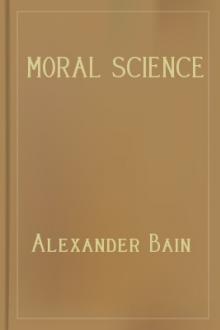Man's Fate and God's Choice, Bhimeswara Challa [best free ereader .TXT] 📗

- Author: Bhimeswara Challa
Book online «Man's Fate and God's Choice, Bhimeswara Challa [best free ereader .TXT] 📗». Author Bhimeswara Challa
639 The Deccan Chronicle. Anantapur, Andhra Pradesh, India. 12 August 2007. p.4.
into inner space, and enable us to feel and touch God within our own being. If we can somehow cut loose from the forces that tie us down, like gravity, could that allow us to reach a new level or depth of consciousness? Eugene Cernan, who spent three earth days on the moon as part of the Apollo 17 mission echoed such hope and wrote that although he was not an overly spiritual person, that vision from outer space made him realize the spirituality of existence, and the existence of a Supreme Being. In the empirical arena, scientists are conducting experiments on the effect of intention and emotion on DNA; on the measurable molecular changes in the DNA molecule emanating from human desires, intentions, and emotions. Clearly, a new paradigm of energetic communication occurring within the body at the atomic and quantum levels seems to be emerging. It is said that the study of human nature at the molecular level is of such import that it could potentially alter the application of biological knowledge for good or evil and help us to influence the evolution of our species.
New research is indicating that “the human brain hardware system has a remarkable functional resemblance to the Internet hardware system which now spans our globe. They believe that this resemblance is such that it can be logically defended that an independent software system, a global mind, will equally miraculously emerge from it in a way which may be comparable with the miraculous emergence of the individual human mind from the individual human brain.”640 Scientists who are researching how the mind really works are raising the tantalizing possibility of discovering “how strong and deeply rooted is the bond that ties us to others, or in other words how bizarre it would be to conceive of an ‘I’ without an us.”641 In another emerging area of research that gives hope to those who emphasize the importance of ‘heart intelligence’, it is claimed that several of the brain’s electrical rhythms, such as the alpha and beta rhythms, are naturally synchronized to the rhythm of the heart, and that this heart–brain synchronization significantly increases when an individual is in a physiologically coherent mode. As Paul Pearsall (The Heart’s Code, 1999) aptly puts it: “An irrational world brings us only misery, but a millennium in which the gifted brain is moderated and instructed by a gentle heart could bring us a shared paradise on earth.”642 This synchronization is likely to be mediated at least in part by electromagnetic field interactions. This is important, as synchronization between the heart and the brain is involved in the processes that give rise to intuition, creativity, and optimal performance. Many great saints as well as thinkers have repeatedly underlined the fact that we can only relate and realize not by what Huxley called ‘discursive reasoning’ or deductive inference, but by ‘direct intuition’, and the source of that intuition is not the mind but the heart. Some gentle souls see growing harmony, congruence and convergence between science and spirituality, and recall the observation of the 20th century German ‘Nobel’ physicist and a pioneer in quantum mechanics, Werner Heisenberg, that “in the history of human thinking, the most fruitful developments frequently take place at those points where two different lines of thought meet.”643 Heart intelligence is one such area. Along with the solitary domain of spiritualism, science is embarking on the same search. The awakening of a consciousness of the heart
640 J.P Krol. The Global Mind and Human Brains. Accessed at: http://www.globalmind.info/global_mind_and_human_brains.htm
641 Cited in: Israel Rosenfield and Edward Ziff. How the Mind Works: Revelations. The New York Review of Books, USA. 26 June 2008. p.65.
642 Paul Pearsall. The Heart’s Code: Tapping the Wisdom and Power of Our Heart Energy. 1999. Broadway Books. New York, USA. p.17.
643 Cited in: B.L. Bhola. Sharing Mystic Insights in Science and Spirituality. The Times of India. Hyderabad, India. 25 June 2008. p.16.
could unite the scientific and the mystic ways to form a spiritual-scientific view of our multidimensional humanity. It could completely alter the basics of human behavior and man’s very perception of his place and role in the universe. Some people think that humankind is poised at such a juncture when the deep insights of mysticism could become scientifically applicable in practical life, which could open the clogged path to a state of heightened awareness and a new consciousness. Scientists have identified what they describe as a “hate circuit” in the brain, specific areas of the brain whose activity is triggered when, for example, the subject sees a person he hates. Such findings raise hope of the tantalizing possibility of special ‘brain clinics’ where we could have our brain’s hate circuits ‘fixed’ in order to become better human beings. On another front, recent scientific discoveries in fields like quantum physics are coming close to the idea of a single unified force behind the universe, which is very similar to the Upanishad concept of an all-embracing Brahman and man as a participant in a seamless existence. If every cell in any part of the body contains a chromosomal DNA that carries the complete code for the entire host, then, some scientists speculate, it is possible that an unseen governing system might very well run on a somewhat similar process, and that everything in the universe, bacteria to a blade of grass, might have a soul, which is in effect a coded reflection of God. That is, quite simply back to Brahman.
Promise of science. Despite the rather troubled track record of science and its popular association with mechanized materialism and nibbling negation of God, it is still the closest on earth to divine power. Till very recently, that power was to prevent or abort reproduction or to terminate life; now we can ‘make life in a laboratory’. But it would be churlish to decry or deny the potential benefits from the scientific quest in our efforts to better ourselves and to ‘soft land’ into the posthuman future. But without a spiritual underpinning, it is more likely to lead us down the primrose path of dalliance and decadence. On the hopeful side, a spiritual ferment is finding utterance and outlet in multiple ways among a growing number of people, albeit nebulous. Disenchanted with organized religion, repelled by crass materialism, many are groping for an anchor in their lives. Rudolf Steiner, the Austrian philosopher who claimed that his knowledge of prehistory and the evolution and nature of mankind were given to him as divine revelation from God, warned that materialism has thrown man down into such depths that a mighty concentration of forces is necessary to raise him again, and that man is now subject to illnesses of the nervous system which are veritable epidemics of the life of the soul. Perhaps the two principal reasons why all previous labors had failed were that the human consciousness remained mind-dominated and the initiatives did not coalesce into a species-scale mutation. Species-scale transformation or uplift, particularly for a creature so diversified and highly evolved as the human, is a daunting task, a task that embraces many intertwined dimensions. Some efforts are needed at the level of an individual being; some, at the layer of a group, community, or nation; some, in those who are at the helm of human affairs in every walk of life. Above all, we need a consciousness-change and a ‘critical mass’ to reach the ‘critical point’. Conceptually, critical mass refers to a group of awakened, self- reflexive people whose collective influence and energy is sufficient and strong enough for a paradigm shift in human consciousness, the bedrock of which is the effortless ability of an individual to identify with humanity as a whole and live and act accordingly. How big or small, the number of such people which can coalesce into a global collective consciousness is hard to guess. The founder of Transcendental Meditation, Maharishi Mahesh Yogi put that figure as one tenth of one percent of mankind, which at the present level of population (seven billion plus) amounts to roughly seven million. Another Indian guru and mystic Osho said that five percent of the ‘human seed base’ is needed for genuine species-scale awakening.
Whatever is the ‘cut-off number’ of the ‘critical mass’ for human transformation, we must recognize that it all comes down to one word: consciousness. All there is, is nothing but
consciousness; really, we do not know the world; we know only the response of our consciousness to impressions made upon it from what we presume to be the world. The response of consciousness itself is a function of the level of consciousness, and how these impressions are processed determines how we behave; and how we behave in the final analysis will influence how we will evolve. Whether that will lead to the advent of a higher form of life, whose very life is love and creed-compassion, whether it will give a chance for the ‘baby Buddha’ to be born within each of us, or whether it will exorcize malice from every crevice of our consciousness and cleanse it of all toxicity and negativity and make us better men, we cannot tell. In any case, we must ensure that the mind is not the sole constituent force in the decision making. Compassion, which has been called the Law of all Laws, is now hiding in some corner of our consciousness, afraid to show up and fearing ridicule. In her classic book The Voice of the Silence (1889), Helena Blavatsky makes compassion speak to us: “Now bend thy head and listen well, O Bodhisattva — Compassion speaks and saith: Can there be bliss when all that lives must suffer? Shalt thou be saved and hear the whole world cry?”644 We must somehow retrieve compassion from the fringe margin and bring it to the center stage in our lives, make it the touchstone of morality. Shedding a tear, which Byron said is the dew of compassion, does more than give comfort to the needy and the suffering; it cleanses the conscience. For that, we need a new paradigm of intelligence that underscores our consciousness and in which





Comments (0)